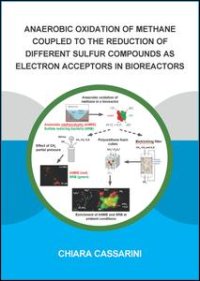
Ebook: Anaerobic Oxidation of Methane Coupled to the Reduction of Different Sulfur Compounds as Electron Acceptors in Bioreactors
Author: Chiara Cassarini (Author)
- Tags: Earth Sciences, Earth Sciences, Hydrology, Surface Hydrology, Engineering & Technology, Civil Environmental and Geotechnical Engineering, Water Engineering, Water Science
- Year: 2018
- Publisher: CRC Press
- City: London
- Edition: 1
- pdf
This research investigated new approaches to control anaerobic methane oxidation coupled to sulfate reduction (AOM-SR) and enrich anaerobic methanotrophs (ANME) and sulfate reducing bacteria (SRB) with the purpose of designing a suitable bioreactor for AOM-SR at ambient pressure and temperature. The current knowledge about AOM and the microorganisms involved in AOM are discussed. The effect of different substrates and pressures was investigated on the ANME and SRB community adapted to the shallow marine Lake Grevelingen, the Netherlands. Further, microorganisms from the Alpha Mound (Spain) deep sediment were enriched with methane gas as substrate in biotrickling filters (BTF) at ambient conditions for 147-230 days of operation. The effect of alternative sulfur compounds (sulfate, thiosulfate and elemental sulfur) were studied and the microbial community was characterized. The highest AOM and sulfate reduction rates were obtained in the BTF fed with thiosulfate as the electron acceptor (~0.4 mmol l-1 day-1), but the highest number of ANME was visualized in the sulfate fed BTF (ANME-2 43% of the total visualized archaea). A BTF was proposed as a suitable bioreactor for the enrichment of ANME and SRB at ambient pressure and temperature which could be potentially used for future biotechnological applications.